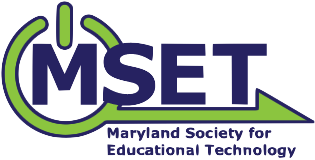
By BEN HURLEY, Washington County Public Schools
December is Computer Science education month. The first week of December is the kickoff with Computer Science education week December 3-9. The emphasis on Computational Thinking is becoming more prevalent in education today. Coding is a great way to foster those skills. Over the last 5 years I have been using the website Code.org with my 5th and 4th grade students to teach them the concepts of coding. However, just 3 years ago, at my school, we began an initiative to give all students access to these skills by creating a class that students visit approximately 1 time a week for 50 minutes just like they would go to PE, art, music, or media, that focuses on Computational Thinking and specifically, Coding. The elementary age is the perfect time to begin building the foundation for these skills just like any other academic subject. Once a solid foundation is laid than when they go on to middle school, high school and beyond, they will have a leg-up on those future careers.
Mitch Resnick, creator of the Scratch software, in his TED talk shares about the importance of why kids should learn to code. It’s a way for students to create and use their imagination. They continue to have a sense of accomplishment and it supports multiple standards in math and science. The importance of the process of design and taking an idea and creating something functional out of that idea.
Elementary age students need a lot of exploration and hands-on time when learning to code. With so many resources and materials out there, here a few of my favorites for elementary age.
iOS Apps:
Hands-on materials:
- Code.org - This website is built for everyone. Take the time to explore it. There are activities for coders of all ages starting in Kindergarten. I use this is as the basis for skill building before and after we do hands-on activities.
- Botley - This robot is great for students starting in PreK through 1st grade. My students learn about directional words and how we build sequences for the robot to follow. Using the materials they set up challenges with the cards for the robot to travel on. Their partner than gives the correct sequence to meet that challenge.
- Osmo-Coding with Awbie - This activity is great for grades K-2. We discuss the importance of creating a sequence and use the blocks in the kit to guide Awbie through the forest. This gives students opportunity to begin exploring the basis for block-based coding. It also reinforces math skills such as counting, adding, sequential thinking and problem solving.
- Ozobot - Great for grades 2-5. Students create color sequencing while also learning about the importance of paying attention to detail. Using markers and color sequencing students can draw and create and then give commands for the Ozobot to follow. Upper grades can also use OzoBlockly to use block-programming to code the robot to do even more. My upper elementary students create mazes. Then, their partner has to code Ozobot to solve that maze.
- Sphero - Students in grades 3-5, this robot is my personal favorite. Not only can students drive this device around with the SpheroEDU app, they also program it by writing block-based algorithms. One of the first activities I do, “Get Control”, students work in groups and set up an “arena” to code Sphero to move from one person to the next without touching anyone.
Ben Hurley can be followed on Twitter at @HurleBen and on his website.

